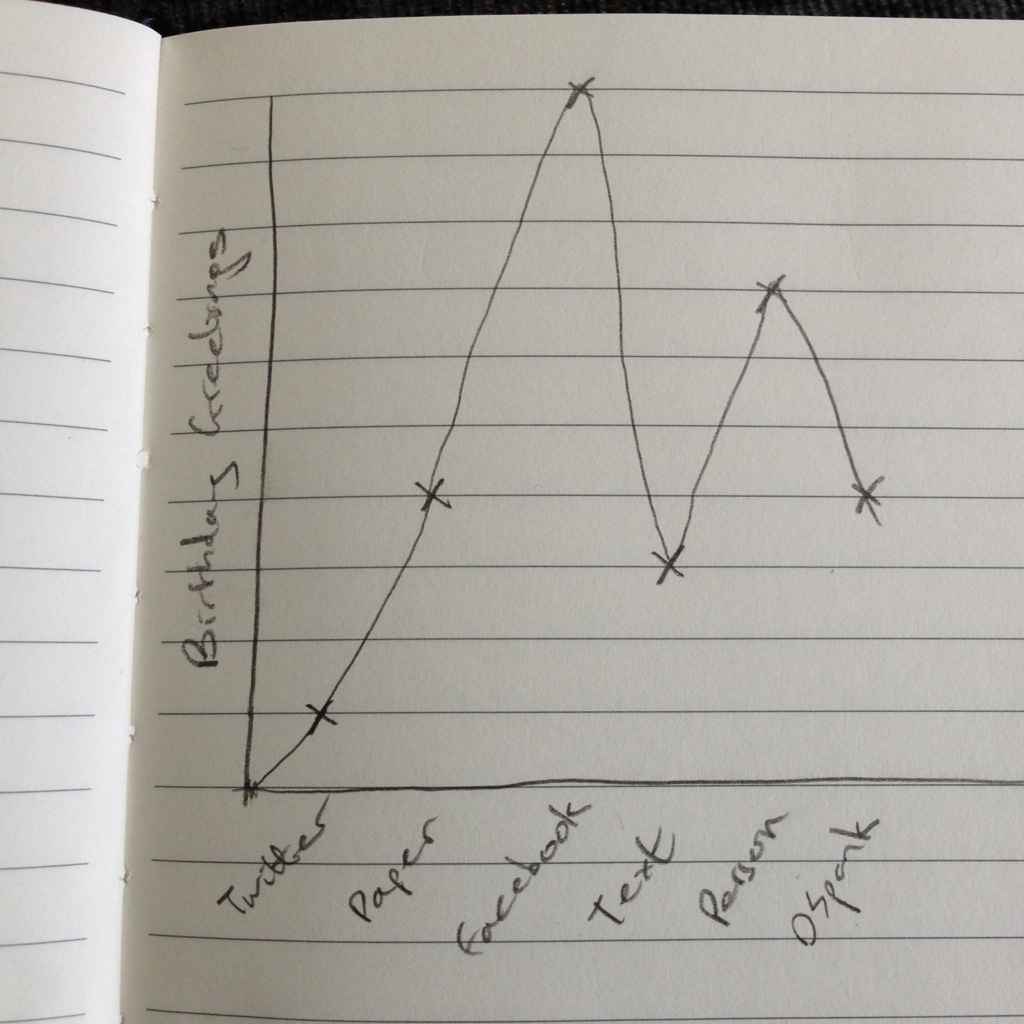The Home Button on iOS devices is a great example of hardware and software design working in harmony: its role as a safety, a reset button that you can always depend on to get you back to the comfort of the home screen. And it is true that the iOS home screen is genuinely comforting: you are at home, where your device can do its primary things (an iPod, a phone, an internet communicator…), where your apps are in the places you put them, each a little tempting button that will do just what you expect. Even the icon on the home button shows you what you're going to get.
As we enter an age where we are used to how touch devices work, we no longer need our training wheels: we need fewer affordances to let us know how things might react. This to me feels right, and for proof take a look a look at an 8 or 80-year old with an iPad. The new gestures unveiled in iOS7 at WWDC show how we will soon be able to navigate around our devices in a faster and more fluid way, power users and regular users. (There are actually some neat animation speedup tricks for the real power users that make the experience even quicker.) In fact most of the gestures are ones that have been introduced in apps over the last few years and at least some of us are so used to we try to use them even when they aren't there.
The home button at first may seem out of place in this new world, but actually its primary use as an escape button is still a great piece of UX, something that is essential on a device that you way want to call an ambulance on as well as play a few rounds of dots.
The problem with the home button is not its primary role. It is its secondary role: as the app switcher. Nothing feels more clunky than, having unlocked with a gesture, navigated around using back and forward swipes, accessed notification centre and control centre, than then attempting to switch between apps by double tapping the home button. You feel your nippy journey around your device suddenly slow to a crawl as your thumb depresses the button, once, then again. The satisfying audible feedback you once liked is now a dull thud in your ears. The whole experience shakes you out of the future and back three years.
Arguably, the tertiary role is just as bad, it's just not used so much. Siri, the time-saving feature that lets you talk instead of act, takes two full seconds of waiting with your thumb pressed down. Siri shaves two seconds of a tasks if you're lucky, and so this method of invocation feels like a prank being played on you for trying to use the feature in the first place.
There are many aspects of iOS7 that really bring the futuristic feel back to iOS devices, the combinations of physical gestures and on-screen animations especially. In the next few months, two more gestures need to be found to not let the home button be a burden around its neck.
